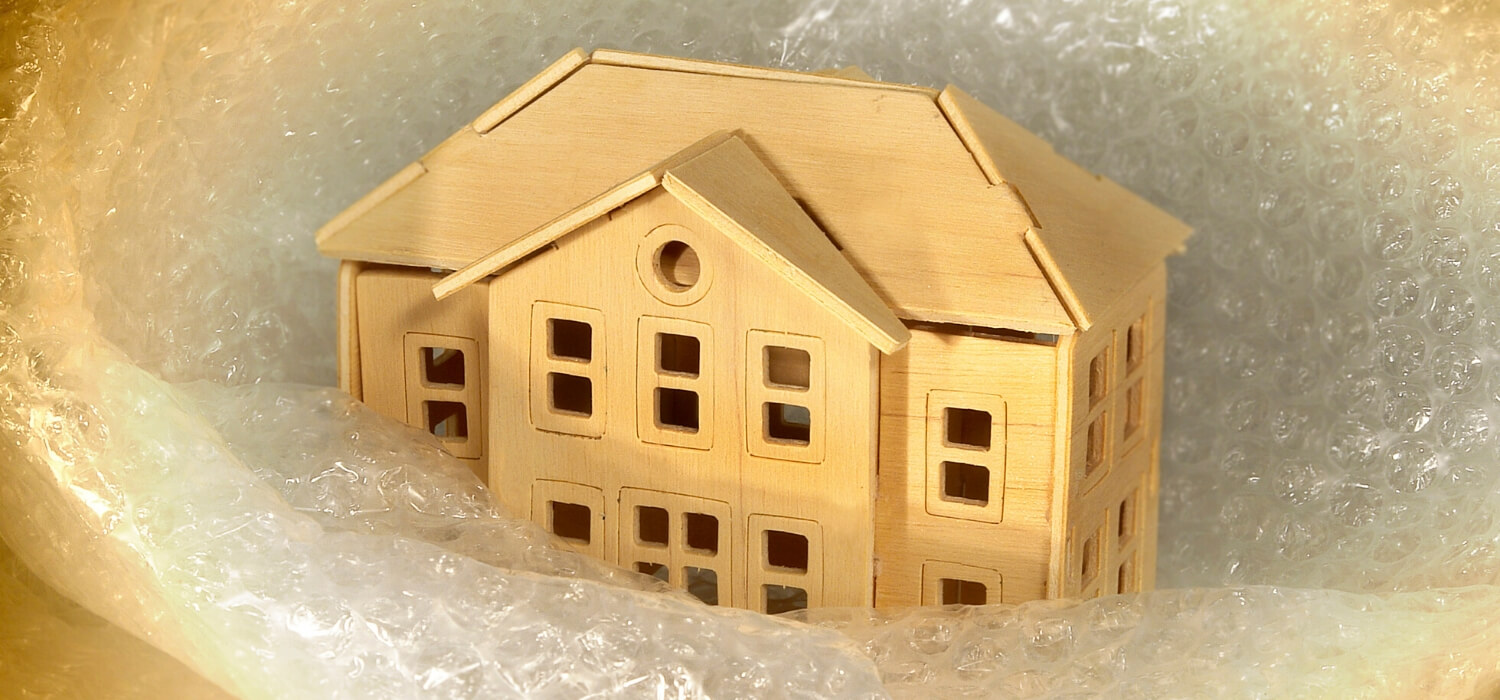What Is a Whole Home Surge Protector and How Does It Work?
Enjoy reading the latest DIY articles and saving money?
Receive our latest helpful hints, tricks and savings, directly to your inbox.
Posted June 24, 2020
Weather is changing, and power spikes are bound to happen. Perhaps, somebody told you about a whole home surge protector and now you are intrigued.
Well, you really should be. As having one can save you from lots of worry and unseen expenses.
In any case, let’s take an in-depth look at what a whole home surge protector is, how it works, the different types of protectors, cost, and a brief overview of the installation.
Keep reading to find all your surge protector questions answered.
Whole Home Surge Protector – What Is It?

The word itself doesn’t develop an idea of simplicity. And the complexity of words can scare people away from further developing their understanding. A whole home surge protector is not much different from a water filtering tank, as they both prevent something from coming in while allowing everything else flows through it.
In simple terms, a surge protector has a filter, allowing all safe electrical currents in, and prevents all irregular voltage from having an impact on your power utilities. By doing so, it protects all of your appliances from burning out, and in some cases exploding.
This makes it the first line of defense against all voltage spikes. It suppresses the spikes and makes sure you can live out your homely life, fulfilled and secured.
On the presumption, that you have never had a whole house surge protector installed – you must be ready to spend some money, as the installation requires the knowledge and ability of an electrician.
Nonetheless, a surge protector is well worth the money, as the concept of having all your appliances and electrical belongings secure and safe year-long is of great value.
As they are the first to go when lightning strikes, electrical devices possess microprocessors, which are very sensitive to power surges. And in some cases, it can be ruined by the smallest of the current changes.
So don’t cheap out, spend a couple hundred now, instead of a couple thousand later when it’s too late.
For a final thought, a surge protector should be installed by a certified and licensed electrician. Unless you possess the capabilities yourself, but if you do not – don’t go playing god. Not installing a surge protector with proper ground and connection can do damage, which cannot be reversed.
Installation only takes 2 hours, so don’t stress on time.
What Does A Surge Protector Combat?

Now that you know what a surge protector is, we can take a look at what is protected by it.
A surge protector will combat all possible damage to circuit boards on all of your electronic appliances. These include HVAC, stoves, dryers, washers, dishwashers, LED strips and lights, computers, fridges, and practically anything that has electrical life to it.
It will also combat any possible electrical surges from appliances cycling, on and off. As device cycling is one of the most prominent causes of surges. Considering that refrigerators and air conditioners use a cycle for their primary function. But cycling also persists in hairdryers and vacuums.
One would think that mini-surges won’t have a lasting effect, but we all know that most problems compound. So don’t let them.
In some cases, a surge protector is installed to combat lightning strikes, which come with powerful voltage fluctuation. As any home on the electrical grid can get hit, and the surge will spread downing utility lines – having a direct effect on your home.
There are a plethora of benefits of surge protection.
Where Does A Power Surge Come From?
By reading the previous paragraph, you already have an idea of where a surge comes from, but let’s delve a little deeper.
In general, a power surge is divided into two groups: an external and internal surge.
An internal surge accounts for 80% of all power surge problems, as it stems from the local implications of appliance cycling, and improper usage of outlets. Take, for example, a hot water dispenser – it heats up, and cools down. All within a short period, causing several electrical disturbances frequently. These compound over time, causing mayday in your utility line.
On the other hand, an external surge accounts for the other 20% of all surges. These come from the outside, hence, the word external. Take, for example, lightning strikes, power wires getting ripped by capable winds, repair maintenance on utility lines, maintenance at the power station.
All of these are outside of your control and can have an immediate effect on the whole electrical grid. In some cases, killing power to all homes within an area. And when this happens, it is usually unplanned. And as we know, unplanned electrical changes cause a surge within every home.
A whole home surge protector has the capacity for combating both internal and external surges. Making your home secure from an electrical malfunction.
What Types of Home Surge Protectors Exist?

Now that you know what a whole home surge protector is, how it works, and what it protects against – let’s take a look at the different types of protectors.
In general, the market of whole home surge protectors consists of three different device types.
Type I – Whole House Surge Protector
A whole house surge protector that is installed at your circuit breaker panel within the house. It is wired directly into a dual-pole breaker, which is in your main breaker. And in some cases can be routed through your sub-panel for down-streaming.
Type one protects all internal surges, all of which must arise from within the home.
Type II – External Surge Protector
A surge protector, which prevents 80% of all external surges. This includes lightning strikes, power line issues, power station maintenance.
It is set up from the utility pole to the breaker panel. It is the first line of defense against the detrimental effects of huge power spikes, which come down the power grid from an external source of malfunction.
Type III – Strip Surge Protector
A strip surge protector is most common. It is a minimal outlet strip, which you can see plugged into an outlet. These can be placed all over your home, and create a degree of separation between the outlet and your devices.
These surge protectors cannot prevent issues that are not directly related to pulse through the protector itself. If you have a device in a naked outlet, you are exposed to damage.
What Is The Cost Of Surge Protector Installation?

And now we get to the pricing. This is a rather undefined question, but we will answer it to the best of our ability.
In simple words, the cost is stringent upon your specific use case scenario. Nonetheless, here are some things to look out for.
Do You Have a Sub-Panel Leading to the Breaker?
Some homes possess a sub-panel, which leads to the main breaker. This is installed, because of the sheer distance between appliances and the main panel.
So you receive power from the main panel through the sub-panel, and not from the power utility.
Having an extra step to cover will cost extra.
Which Type of Surge Protector Do You Need?
Each surge protector is made by a different brand and covers a different type of protection filament. For example, each device has varying current capacity, and add-on features, which you may or may not need.
Depending on the type, internal or external – the price varies greatly.
Which Warranty Are You Opting For?
It is recommended to opt-in for a warranty unless it is already included. In most cases, having comprehensive warranty insurance will cost a whole lot more.
And the warranty price differs on the complexity of the device.
Who Is Going to Install the Whole Home Surge Protector?
Because of this a whole home surge protector, and not a strip protector – you will need somebody to install it. Having to hire a contractor or employ the services of a professional company will affect your overall cost.
Make sure to check for reviews, and research the companies. In any case, word of mouth reference is the best way to determine compatibility. Usually, an electrician will charge by the hour, and adjust the price in accordance with their experience and capability.
So What’s the Average Device Cost?
Sure, it’s great to know the varying costs for all activities included in installation. But you just want to know the average cost for a device.
In that case, it’s quite simple. On average, quality WSPD costs anywhere from $100 to $400. Excluding all other costs.
Surge Protector Installation Overview

In all cases, we highly recommend employing the services of a licensed professional, who will install the whole house surge protector in 2 hours. As the electrical wiring can be highly confusing, installed improperly, and damage your home – if you do not know what you are doing.
Not to mention, that having poor grounding will prevent the proper function of your device. So for the safety of your home and family, consult with a professional who will gladly help you out, and save you the hassle of future issues.
Let’s take a look at what the whole surge protector installation looks like for a professional. This is a rough overview of the process, and differs for each individual specialist, as they perform their job in their own manner.
- Gather all necessary tools, which are protected from electrical current.
- Place all plugged-in and active devices/objects on stand-by for the time being.
- Use a voltage detector to ensure the broken panel does not have current running through it during installation.
- Determine the manual and pertinent instructions for specific WSPD device.
- Determine if the device can be installed on the outside of the panel, in order to increase longevity.
- Examine the SPD wires, which are usually green (ground), white (neutral), black (active), black (active).
- Proceed with wiring and installation.
- Make sure everything is operational, before applying electricity to the main breaker.
- Advise homeowners to perform a monthly checkup on the power suppressor to establish the presence of protection. (Each device has a joule capacity, which depreciates with each surge).
In any case, this is not a verbatim installation. This is something that can be witnessed on the medium of all electrical specialist work. Depending on your location, accessibility to the breaker and/or sub-panel, personal preference, and other faculties of installation – you will witness a different process.
This is not a DIY installation guide, and should not be treated as such. For ultimate success with an SPD, engage the services of a licensed electrician from a reputable company.
A wonderful segway for us (Happy Hiller) to recommend our exceptional plumbing, electrical, and HVAC services. We perform high-quality surge protection installation with a wide-area of service coverage.
Surge Protection Done Right

Now that we’ve covered everything from what a whole home surge protector is, how it works, the different types of protectors, cost, and a brief overview of the installation. You are well on your way to having your own installed, secured, and maintained.
And by doing so, you will be securing your home for many surges ahead, preventing any doubt of mind when it comes to dysfunctional and broken devices.
Live life to the fullest, enjoy the convenience of electricity, and worry not about the potential problems that come with it. Even surges that are outside of your control – can still be under control within your home, and that’ the way it should be.
Enjoy and good luck.
 Daily Promotion
Daily Promotion
FREE 10-Year Extended Warranty with Generac
Bonus protection for your backup power.
Get Promotion